 |
VO-BB - 20 YEARS OLD!
Established November 10, 2004
|
| View previous topic :: View next topic |
| Author |
Message |
Foog
DC
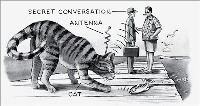
Joined: 27 Oct 2013
Posts: 608
Location: Upper Canuckistan
|
 Posted: Tue Feb 17, 2015 5:27 pm Post subject: HPF: on mic, in chain, or post? Posted: Tue Feb 17, 2015 5:27 pm Post subject: HPF: on mic, in chain, or post? |
 |
|
I find myself with three different options for adding an HPF to my audio. It's an embarrassment of riches to have so many choices! But each choice seems to have a downside. I could do it in my DAW as I edit, but I worry inordinately* about processing, and want to avoid that photocopying of a photocopy deterioration effect on my audio. Then again, the mic switch and the HPF of my interface are not ideal either. Here is each option and its drawback(s) as I see 'em...
1. Mic switch.
Bob Stevens mentioned in another thread that he's not a fan of this one, and I've been worrying about whether it is a good choice or not since switching to this version a few weeks ago.
2. Interface.
Unfortunately, the HPF on the id22 is at 100Hz and I prefer to cut around 80, so I've never bothered even trying this one.
3. DAW
This is what I used to do as a matter of course, but I switched over to the microphone version to give myself one less processing step in the "raw" audio I send out.
I'm curious as to what you folks prefer to use, and why.
*I worry inordinately about everything. I spent 2 whole minutes worrying about whether I should put this bit in brackets or as a footnote with an asterisk!
_________________
Andrew Fogarasi
|
|
| Back to top |
|
 |
Bob Stevens
Contributore Level V
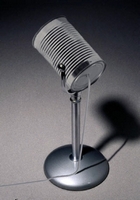
Joined: 27 Dec 2012
Posts: 151
Location: Orange County, California
|
 Posted: Tue Feb 17, 2015 6:09 pm Post subject: Posted: Tue Feb 17, 2015 6:09 pm Post subject: |
 |
|
If it is a raw read I generally use a Jim Williams modded Aphex Expander as a HPF. If I am cleaning it up myself I may use several different plugins in post and depending on the mic I may or may not use the expander when recording.
I am pretty sure the ID22 has a real time eq, not the switch, that you can use.
_________________
"Dialog is the painting on a canvas of silence" |
|
| Back to top |
|
 |
Jason Huggins
The Gates of Troy
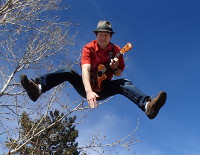
Joined: 12 Aug 2011
Posts: 1846
Location: In the souls of a million jeans
|
 Posted: Tue Feb 17, 2015 9:33 pm Post subject: Posted: Tue Feb 17, 2015 9:33 pm Post subject: |
 |
|
I like a HPF IF the room has enough low frequency noise to cause issues with editing. By "issues" I mean that zero crossings are not very close together, resulting in the possible audible pop when editing NOT at a zero crossing. I had this issue with my previous mic, so I used a HPF at 80hz on my DBX 286a for live sessions that were recorded by another studio and in software if I was editing my own stuff. I have also found that a lot of mics that have HPFs don't really attenuate enough to make them worth using when a lot of noise is present, and if you don't have much noise present...you really don't need the HPF to begin with. Some mics only reduce the low frequencies by like 4dB...when I do it in software I reduce by 60dB. That's a pretty substantial difference.
I will also say that using a HPF on a mic and then doing it again in software if necessary is not anywhere close to the copy of a copy analogy. Basically, the HPF just lowers the level below a certain frequency. If you do it again, you just lower it a little more. That is not degrading the audio really...more like lowering the volume a bit...and then a bit more.
The real question is: Why do you need a HPF?
My preference is to NOT use a HPF unless I am doing a live session with another studio recording (i.e. Source Connect or ISDN) AND I have substantial enough low frequency noise that I don't want to send out audio without addressing it. If I am editing my own audio and then sending it, no HPF via hardware and then just remove ONLY the frequencies that are an issue. For me, it was only below about 65hz, and I just had that process set up as a hotkey that I just hit as soon as I finished recording. My new mic rejects those frequencies that were an issue so I don't use a HPF anymore. |
|
| Back to top |
|
 |
Foog
DC

Joined: 27 Oct 2013
Posts: 608
Location: Upper Canuckistan
|
 Posted: Wed Feb 18, 2015 12:25 am Post subject: Posted: Wed Feb 18, 2015 12:25 am Post subject: |
 |
|
Alas, the lovely booth I built (i.e., my uncle built while I dropped things and hit my thumb with a hammer) last year is tiny, and boomy even when stuffed with bass traps. So I am afraid that one way or another, I need some sort of HPF.
I may not have been clear Jason, but my fear isn't that doing an HPF using the switch on the mic would add to the "photocopy" effect in any way, it's strictly that doing the HPF at all in software does. My apologies for not remembering who and when, but I think it was someone on the vo-bb who pointed out to me that each run of a process you do in your DAW can be akin to a new photocopy being treated as a master. I don't profess to understand precisely when I need to worry about this and when I don't. That is, I dunno what processes "degrade" the original and which ones don't. (several repeated normalizing passes and non-clipping gain bumps and reductions, for example, do not seem to degrade the signal in any way). But repeated HPF sure does some whacky stuff!
For kicks and as a demonstration, I just recorded a sample with no HPF, followed by the same track with one kinda heavy HPF pass in Pro Tools (97 Hz, 12dB/oct), and then with a dozen (identical) passes in Pro Tools. I loaded it up onto soundcloud since the difference is striking even with their awful compression or whatever it is they do to files...
https://soundcloud.com/andrew-fogarasi/12hpfpasses
The last one is right messed up, innit! And that's the reason why I've recently become reluctant to use the DAW's filter when given other options. OF course, I'll be more than happy to have that reluctance put at ease if it ends up being the best of my options.
Edited to add: Bob, far as I know the id22 only has the switch. "Far as I know" is one helluva red flag though. I readily admit my own inexperience with it since I've only had it a few months and once I figured out a way to patch in live direction, I haven't done much exploring.
_________________
Andrew Fogarasi
|
|
| Back to top |
|
 |
Frank F
Fat, Old, and Sassy

Joined: 10 Nov 2004
Posts: 4421
Location: Park City, Utah
|
 Posted: Wed Feb 18, 2015 1:24 am Post subject: Posted: Wed Feb 18, 2015 1:24 am Post subject: |
 |
|
I wont go into the when , or why, just facts. Use a HPF in post. Never use an on mic version as they are not accurate or usable as there are many, many, many variables to work with.
What one person uses is simply a guide for your room and needs.
the more foam or traps you use the more boomy or boxy your sound will become. Add some spice to your life with a bi of reflection distraction. Live things up a bit, take some traps out and create a "sound space" not a dead space and/or a dying space.
Bright and clean is "in". Boomy, bassy, and bummed is "out".
Frank F
_________________
Be thankful for the bad things in life. They opened your eyes to the good things you weren't paying attention to before. email: thevoice@usa.com |
|
| Back to top |
|
 |
vkuehn
DC
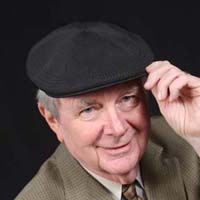
Joined: 24 Apr 2013
Posts: 688
Location: Vernon now calls Wisconsin home
|
 Posted: Wed Feb 18, 2015 6:31 am Post subject: Posted: Wed Feb 18, 2015 6:31 am Post subject: |
 |
|
| Foog wrote: |
For kicks and as a demonstration, I just recorded a sample with no HPF, followed by the same track with one kinda heavy HPF pass in Pro Tools (97 Hz, 12dB/oct), and then with a dozen (identical) passes in Pro Tools. I loaded it up onto soundcloud since the difference is striking even with their awful compression or whatever it is they do to files...
|
I captured you recording and looked at it in Adobe Audition. Me thinks you chose a HPF that began its curve way too high. The one-pass recording shows everything below 150 hz or so being reduced. The twelve-pass version shows that the curve began way up at 400 to 500 hz. Try a curve that cuts everything below 90 hz and see what happens.
The copy-of-a-copy "like a xerox of a xerox" is sometimes folklore left over from the days when we made a tape copy of a tape copy of a tape copy.
For that folklare to be accurate, then a person on a fixed salary should expect his/her paycheck to be a little bit different every pay day because "computers just estimate all those values anyway" and you get a different result every time because of random estimates.
I still have a copy of my old Cool Edit software around and once in a while I fire it up just for grins. Some of their algorithms apparently did some funny match because running compression or EQ on a file can result in degredation. The newer versions of Audition show less and less flotsam from multiple passes. The math is apparently improved significantly.
Most of us pick a software because we like the look and feel of the on-screen presentation and the menu commands. How often do we evaluate software choices by coming up with a multiple-pass test to see if the math formulas are of quality design? |
|
| Back to top |
|
 |
Lee Gordon
A Zillion

Joined: 25 Jul 2008
Posts: 6868
Location: West Hartford, CT
|
 Posted: Wed Feb 18, 2015 11:10 am Post subject: Posted: Wed Feb 18, 2015 11:10 am Post subject: |
 |
|
| vkuehn wrote: |
I still have a copy of my old Cool Edit software around and once in a while I fire it up just for grins. |
I still use Cool Edit 2000 as my "daily driver." Before I switched from Windows XP to Windows 7, I verified that it (and Quicken 2000) would still work with that operating system. I mostly use it just for recording and editing and almost never invoke the EQ or compression functions. If I want to do noise reduction or time compression, I switch over to Audacity, because I think it handles those functions better than CE2K. Maybe I'm just a cheapskate, but I fail to see how six versions worth of incremental enhancements have made the product worth several hundreds of dollars more than the seventy bucks I paid for the original (plus fifty for the multi-track plug-in).
_________________
Lee Gordon, O.A.V.
Voice President of the United States
www.leegordonproductions.com
Twitter: @LeeGordonVoice
 |
|
| Back to top |
|
 |
Foog
DC

Joined: 27 Oct 2013
Posts: 608
Location: Upper Canuckistan
|
 Posted: Wed Feb 18, 2015 5:50 pm Post subject: Posted: Wed Feb 18, 2015 5:50 pm Post subject: |
 |
|
| vkuehn wrote: | | I captured you recording and looked at it in Adobe Audition. Me thinks you chose a HPF that began its curve way too high. The one-pass recording shows everything below 150 hz or so being reduced. The twelve-pass version shows that the curve began way up at 400 to 500 hz. Try a curve that cuts everything below 90 hz and see what happens. |
Well that's all sorts of troubling that is. The settings were at 97 Hz, 12dB/oct, as I mentioned. When doing the cut in Pro Tools I usually have it set at around 80Hz, but if it is really cutting at 150 when the plugin is telling me 97, then... yeeesh!
| Quote: | | Most of us pick a software because we like the look and feel of the on-screen presentation and the menu commands. How often do we evaluate software choices by coming up with a multiple-pass test to see if the math formulas are of quality design? |
Another reason this inaccuracy troubles me is I was using the default 1-band EQ plugin for Pro Tools 11. You'd think for the big bucks it wouldn't degrade, or at least that it would cut where it says it will cut.
Anyone else here game for an experiment? If yes, then try the multiple HPF passes in whatever DAW you use and let me know how it turns out.
_________________
Andrew Fogarasi
|
|
| Back to top |
|
 |
Lance Blair
M&M
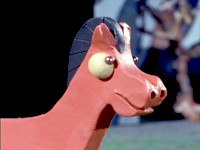
Joined: 03 Jun 2007
Posts: 2281
Location: Atlanta
|
 Posted: Wed Feb 18, 2015 6:05 pm Post subject: Posted: Wed Feb 18, 2015 6:05 pm Post subject: |
 |
|
HPF in post, unless you have a HPF on the pre that can be dialed in to 70 Hz or lower and isn't cutting anything above 80 Hz. Never on the mic unless you're recording in a hotel room.
I loved this old preamp I had for this feature:
http://www.speck.com/mp50/images/SPECK%20MicPre%205%20front%20rework.gif
Really wish I had it back for my CAD.
_________________
Skype: globalvoiceover
and now, http://lanceblairvo.com the blog is there now too! |
|
| Back to top |
|
 |
vkuehn
DC

Joined: 24 Apr 2013
Posts: 688
Location: Vernon now calls Wisconsin home
|
 Posted: Wed Feb 18, 2015 6:31 pm Post subject: Posted: Wed Feb 18, 2015 6:31 pm Post subject: |
 |
|
| Foog wrote: | Well that's all sorts of troubling that is. The settings were at 97 Hz, 12dB/oct, as I mentioned. When doing the cut in Pro Tools I usually have it set at around 80Hz, but if it is really cutting at 150 when the plugin is telling me 97, then... yeeesh!
Another reason this inaccuracy troubles me is I was using the default 1-band EQ plugin for Pro Tools 11. You'd think for the big bucks it wouldn't degrade, or at least that it would cut where it says it will cut.
|
I used to do "darkroom" with film tanks, developers, fixers, high and low contrast print paper, etc. If you want to read some nasty-grams, get into a photographers discussion group. Photoshop and other software brought all the terminology across to the software, but the terminology is often used to describe things that work differently in electronics than they do in physical materials.
Filters were developed as hardware "thingys" that had certain behaviors when you used resistors, capacitors, resonant coils, etc. They brought the same terminology across to the software world... whether it works the same way in software as it does in discrete parts or not.
I worked with limiters and levelers back when they were mechanical and they had tubes. When I got Cool Edit and then Audition, it took me 8 to 10 years of beating my head against the wall because I tried to set attack time and decay time with the same logic I did with discreet mechanical hardware devices. And I edited some recordings that sound horrible because I was trying to follow 'the old logic'. It is not enough to say "set the cut point at 97 hz. You may need to go in and tell the software whether you want a Bessel, a Butterworth, a Chebychev or an Elliptical algorithm used in your filter.
Take some white noise or pink noise and create an audio file and then apply various filters with various 'cut points' and look at some of the modernist, impressionist art that you get when you plot out the results.
Sooner or later most of us have to decide whether we want a Phd in Electronic design.... or do we just want to train our voice to deliver the best possible verbal output.... and let the George Whittams of the world figure out the technical end for us. |
|
| Back to top |
|
 |
|
|
You cannot post new topics in this forum
You cannot reply to topics in this forum
You cannot edit your posts in this forum
You cannot delete your posts in this forum
You cannot vote in polls in this forum
|
Powered by phpBB © 2001, 2005 phpBB Group
|



